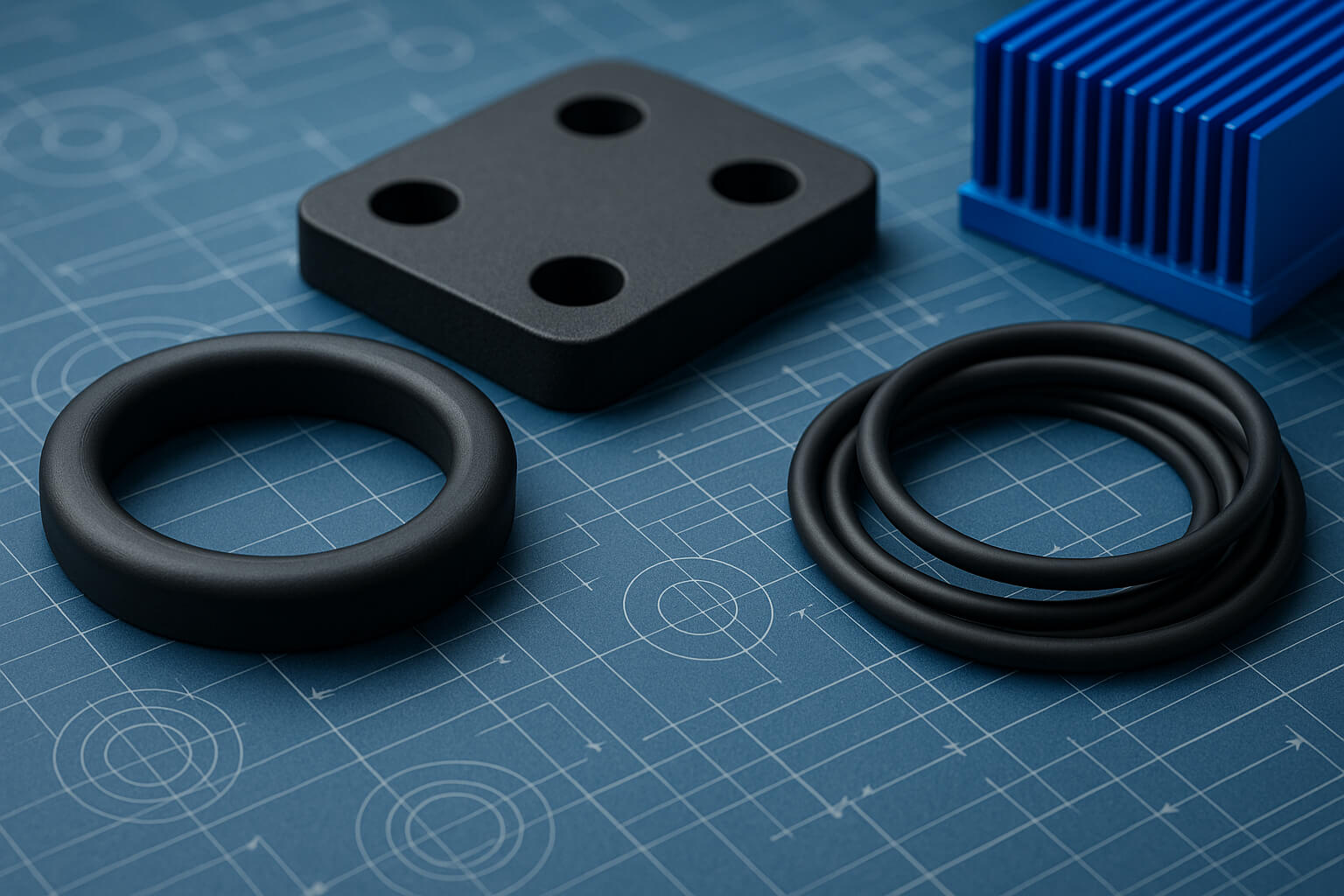
Silicone elastomers are essential materials in modern engineering, providing flexibility, durability and high-performance capabilities across various industries. Their compressibility, combined...
Also known as heat transfer material and sometimes shortened to TIM, a thermal interface material is any substance placed between two components to improve the transfer of heat from one to the other. Usually, the goal is to dissipate the heat by transferring it to a heat sink, which prevents electronics from rising to dangerous temperatures.
There are a lot of different materials on the market. There are pastes made of various liquid polymers, pads made of wax, aluminum, graphite or silicone, tapes, solders, gels and more. Of all these options, the most common forms are pads and pastes, while the most common base material is silicone.
To choose the right thermal interface material, you need to know both its inherent thermal conductivity and how it wets out.
Inherent thermal conductivity is defined as Watts per meter-Kelvin (W/mK). It’s a measurement of how much heat a given material can disperse over time. The higher the number, the more heat that material can handle.
Wet-out refers to the ability of a material to replace air gaps in an assembly. It can also be thought of as how soft or squishy the material is. That softness determines how well the material can spread to fill in any spaces that would otherwise be occupied by air (which is a poor thermal conductor).
Besides those two key parameters, there are a few other criteria you can look at when choosing a thermal interface material.
Looking to get started with Sur-Seal’s thermal material services? Give us a call today at 513-574-8500 or contact us online to get started.
Any item or product that’s using electricity is either already using or could be using a thermal interface material. A list of every possible application would rival an old encyclopedia set in word count, but here are just a few examples to get the imagination going:
Engineers in need of a thermal interface material should get in touch with a fabricator specializing in thermal management. At Sur-Seal, our experts can help with selecting the right material for any project, regardless of if it’s still in the concept stage or on the verge of mass production. Sur-Seal focuses on making the selection and fabrication process fast, painless and affordable. That’s why we created our Sur-Cool line of silicone thermal pads. We’ve made it simple to find the right solution that’s both high quality and cost effective. Sound too good to be true? We can prove it — just reach out and request a quote.